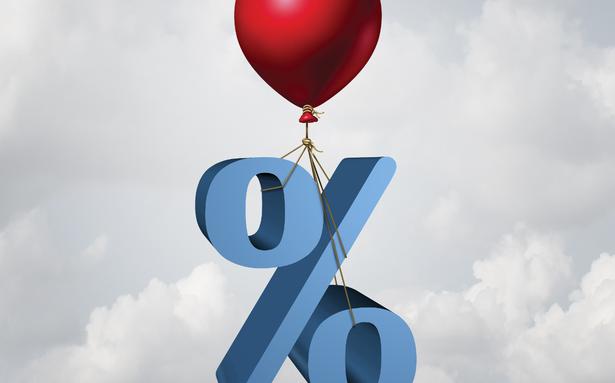With the repo rate hike, investors can expect a better deal as the Reserve Bank reversed the trend of rock-bottom interest rates
With the repo rate hike, investors can expect a better deal as the Reserve Bank reversed the trend of rock-bottom interest rates
The Reserve Bank of India’s decision last week to convene a surprise Monetary Policy Committee meeting and raise its repo rate to 4.4% from 4% caused turmoil in equity markets. But this is good news for fixed income investors.
It shows that the RBI and MPC are finally ready to reverse their three-year policy of keeping interest rates at rock bottom to help businesses and borrowers survive the pandemic. Savers and investors can look forward to better deals on their fixed income products in the coming year.
With the bullish cycle just beginning, interest rates in India may still have a long way to go. Before falling to a decade-low of 4%, India’s repo rate was 6% in 2018. In 2014-15 it even rose to 8%. With the RBI currently walking a tightrope between inflation and growth, market experts believe that repo rates could rise another 75-100 basis points (bps) to 5.15-5.4% next year. Despite being the official policy rate, the repo rate itself means little to savers or investors. It is simply the rate at which banks borrow money from the RBI for the short term whenever they need liquidity.
So if you’re a fixed income investor, it’s more useful to know what has happened and is likely to happen to the interest rates for the investment options you use regularly so that you can make the right decisions. Here goes:
Bank FDs
Although RBI repo rate moves are meant to send signals to banks to follow, banks’ fixed deposit (FD) rates are usually quite slow to respond to RBI moves, especially when there is a bullish trend.
For example, despite all the action on market rates over the last year, SBI’s FD rate has barely moved for a year or two from 5% in January 2021 to 5.1% now (last revised February 2022). FD rates for 2-3 year terms have increased from 5.1% to 5.2% and for 3-5 year terms from 5.3% to 5.45%. Private sector banks like IndusInd offer a slightly better deal with interest rates ranging from 6-6.5% for 1-5 year maturities and small financial banks like Equitas offer 6.1-6.75% for similar maturities.
But banks’ FD rates are quite poor today relative to market rates and are likely to be revised upwards next year. If you’re a bank FD investor, it makes sense to stick to the shortest maturities possible now, say six months to a year. This can help you get far better rates if the banks decide to keep up with the RBI and the markets.
postal systems
Interest rates on post office systems such as Post Time Deposits, Monthly Income Account, National Savings Certificates (NSC), Senior Citizens Savings Scheme (SCSS) and PPF are reset quarterly by the government.
For the current April-June quarter of 2022, post office deposits offer 5.5% for 1 to 3 years and 6.7% for 5 years. The Monthly Income Account offers 6.6% and the NSC 6.8%. SCSS offers 7.4% while PPF is at 7.1%.
All of these rates are better than comparable rates for bank FDs. The rates for postal paper are to be linked to the market yields of government securities with different maturities.
With government bond market yields soaring over the past six months, an upward revision in postal rates is overdue.
However, to protect savers from the very sharp drop in market interest rates, the government had not lowered interest rates on these programs for the past two years. When interest rates for post offices are increased, government borrowing costs increase as the proceeds from these systems are used by the center.
Therefore, you can expect interest rates on postal systems to be raised over the next year if interest rates continue to rise. However, the hikes may not materialize immediately. If you want to invest in postal systems, avoid the long-term systems that tie up your money for five years or more, like the Monthly Income Account, NSC, SCSS, and so on; It’s best to defer your investment for a quarter or two until better rates materialize.
If you’re looking to invest in a retirement or annuity plan, it’s best to defer investing in anticipation of better interest rates.
government bonds
Since RBI recently allowed investors to open RBI Retail Direct Gilt accounts, ordinary investors have the opportunity to participate directly in government bond auctions. The good news for retail investors is that yields in the government bond market tend to react very quickly to inflation and other market signals. In fact, the yields on these bonds have risen well ahead of bank FDs and postal systems over the past year. The table below shows that after rising 130 basis points to 200 basis points, current yields on 1-year government bonds (gilt) are 5.77%, 3-year gilts are 6.92%, 5-year 7.27% and 10-year year olds are 7.47%. These are very attractive rates for the safest bonds on the market that are centrally guaranteed. Regular income seekers can invest in these auctions if they are willing to hold their money until these bonds mature. Again, it would be safer to invest in 1- to 5-year bonds first and switch to longer-dated bonds as interest rates continue to rise.
Investment funds
Unlike the above instruments, mutual funds provide returns both from the interest they receive on the bonds they hold and from bond price gains. Most debt funds outperform other options when interest rates fall. But when interest rates rise, falling bond prices result in debt fund NAV losses. The longer the maturity of the bonds that the debt fund owns, the bigger the dip for the NAV.
Therefore, mutual fund investors today would be better off sticking with debt funds that invest in very short-term bonds with a maturity of less than a year. Ultra-short duration funds, short duration funds, and variable rate funds are better options.




